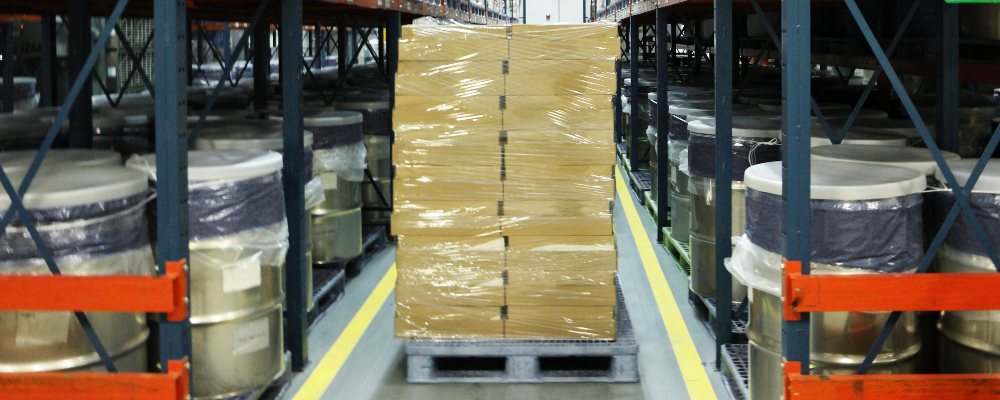By Jim Rabuse | May 09, 2023 0 Comments

Understanding Safe Pallet Packaging & Shipping Guidelines
Properly packing and shipping items is essential for avoiding costly errors, delays, and other accidents. Understanding how to properly package and ship pallets will go a long way toward preventing mistakes that could threaten the safe arrival of your items. In this blog post, we tackle the issue of safe pallet packaging and the best practices required when sending them out to their final destination. We’ll explore what constitutes proper preparation of both standard pallets and oversized pallets before shipment as well as discuss appropriate safety measures while loading these packages onto vehicles so that they ensure arrive intact at their intended destinations.
Why is Pallet Packaging Important for Shipping & Storage
Pallet packaging is not just about convenience, it’s an essential component of ensuring efficient shipping and storage. Palletizing goods makes it easier and safer to transport large quantities of items because it allows forklifts and other mechanical handling equipment to easily move them around. This reduces the number of people involved in the handling process, thereby minimizing the risk of accidents and damage to the shipping pallets. Additionally, pallets keep the goods off the ground, protecting them from moisture and dust, which can help save items from spoilage and other types of damage. Proper palletizing and packaging also assure that goods are stacked sturdily, maximizing their storage space and minimizing the possibility of damage while in the warehouse. All in all, pallet packaging is an easy and cost-effective way to guarantee that your goods are shipped and stored safely and efficiently.
Safety Guidelines and Regulations to Follow When Shipping with Pallets
When it comes to shipping with pallets, securing the safety of your products and the people involved in the process should be a top priority. Adhering to Pallet Packaging guidelines and regulations set by relevant authorities is crucial for the efficient and safe transportation of goods on shipping pallets. These guidelines may include proper pallet quality and dimensions, stretch wrap requirements, secure pallet loading and stacking, and the use of strapping and other securing materials to prevent movement during transit. By being informed and following these regulations and guidelines, you can minimize the risk of accidents, loss, and damages during transportation, and ensure your products reach their destination safely and intact.
How to Properly Package Your Products on a Pallet
When it comes to shipping products on a pallet, proper packaging is crucial. Start by selecting a sturdy pallet that can hold the weight of your items. Next, stack your products symmetrically, making sure they are properly aligned and on flat structures. It’s best to keep products in their upright position while wrapping the entire bundle with plastic film and using corner boards that fit snugly. Use shrink wrap or stretch film to secure your products to the pallet and prevent any shifting or movement during transit. Don't forget to label your products clearly and accurately, including any necessary information such as weight, destination, and handling instructions. By properly packaging your products on a pallet, you can guarantee their safety during shipping and increase the likelihood of arriving at their destination intact.
Best Practices for Storing, Handling, and Transporting Goods on a Pallet
Storing, handling, and transporting goods on a pallet is a necessary practice in the logistics industry. It enables companies to efficiently move large quantities of products, while also protecting them during transit. To promise that your goods arrive at their destination in good condition, there are some best practices you should follow. First, when storing goods on a pallet, make sure it is done in a cool, dry, and clean environment. Also, always use appropriate protective packaging materials and check that they fit snugly on the pallet. Finally, use a forklift or pallet jack to handle the pallets carefully, and avoid dragging or bumping them against other objects. Following these best practices will help your goods to arrive at their destination in the same condition they were in when they left the warehouse.
In conclusion, understanding why pallet packaging is important is key to any business wanting to transport and store goods safely. Following safety guidelines and regulations when shipping with pallets, and properly packaging products on a pallet creates a safe and efficient process. Be sure to follow the best practices for storing, handling, and transporting goods which includes documentation of product positioning for easy reference for loading or unloading, secure stack weights without exceeding the maximum weight limit of each pallet due to improper stacking, and using durable packaging materials as recommended by shipping carrier guidelines. Proper measures taken to ensure that pallets are securely packed can significantly decrease shipping mishaps and injuries during the delivery process.
Want more information on pallet packaging for product shipping? Contact us today!

About the Author: Jim Rabuse
Need Help?
Increase your productivity with entry-level of full-line packaging automation, reduce packaging costs, and increase product protection with a full catalog of packaging supplies.